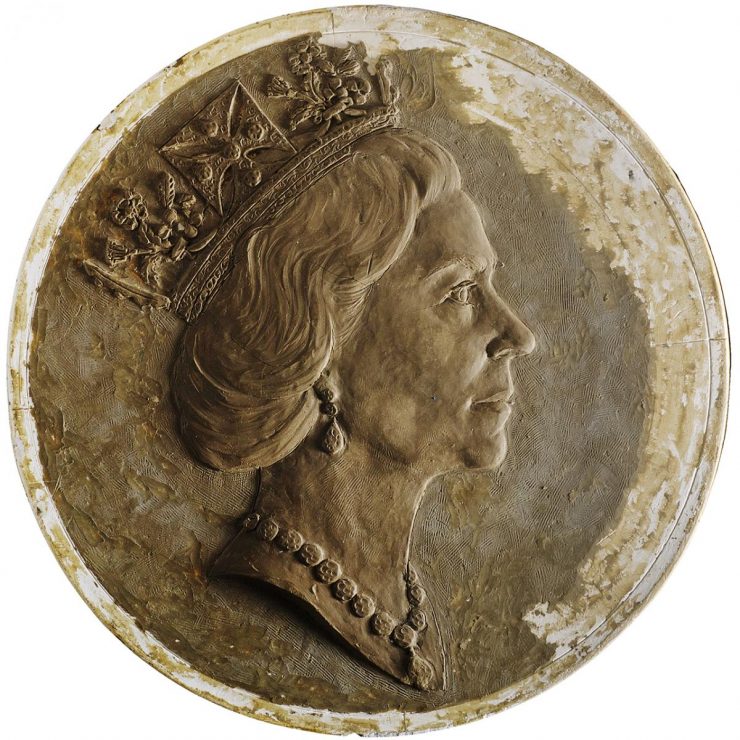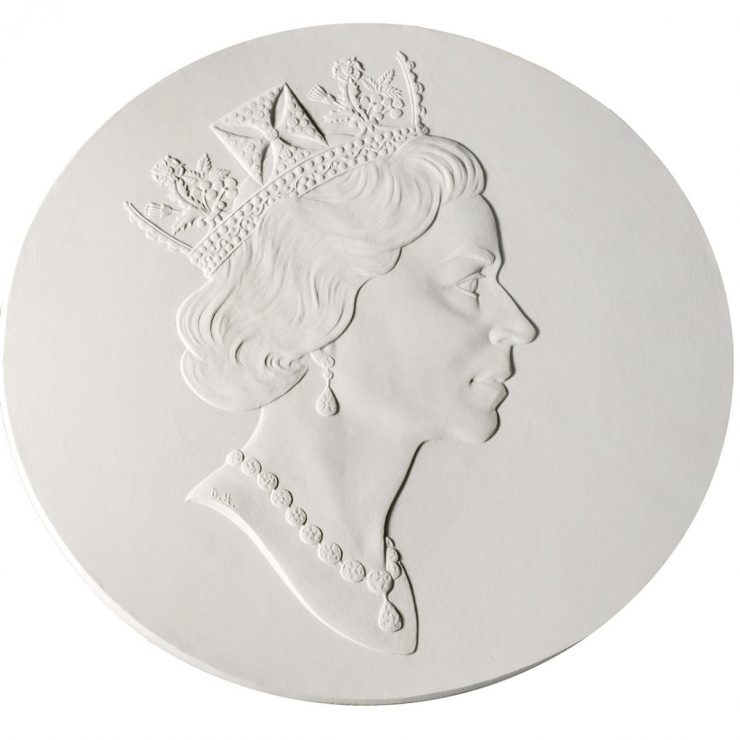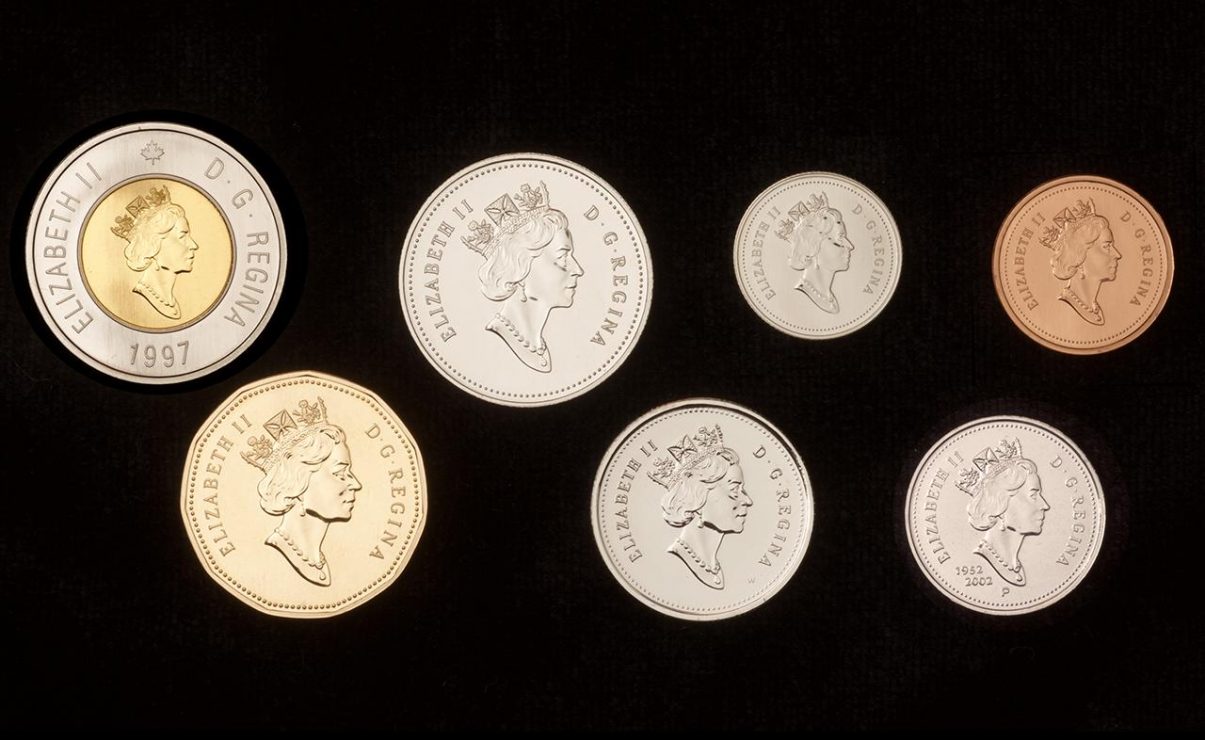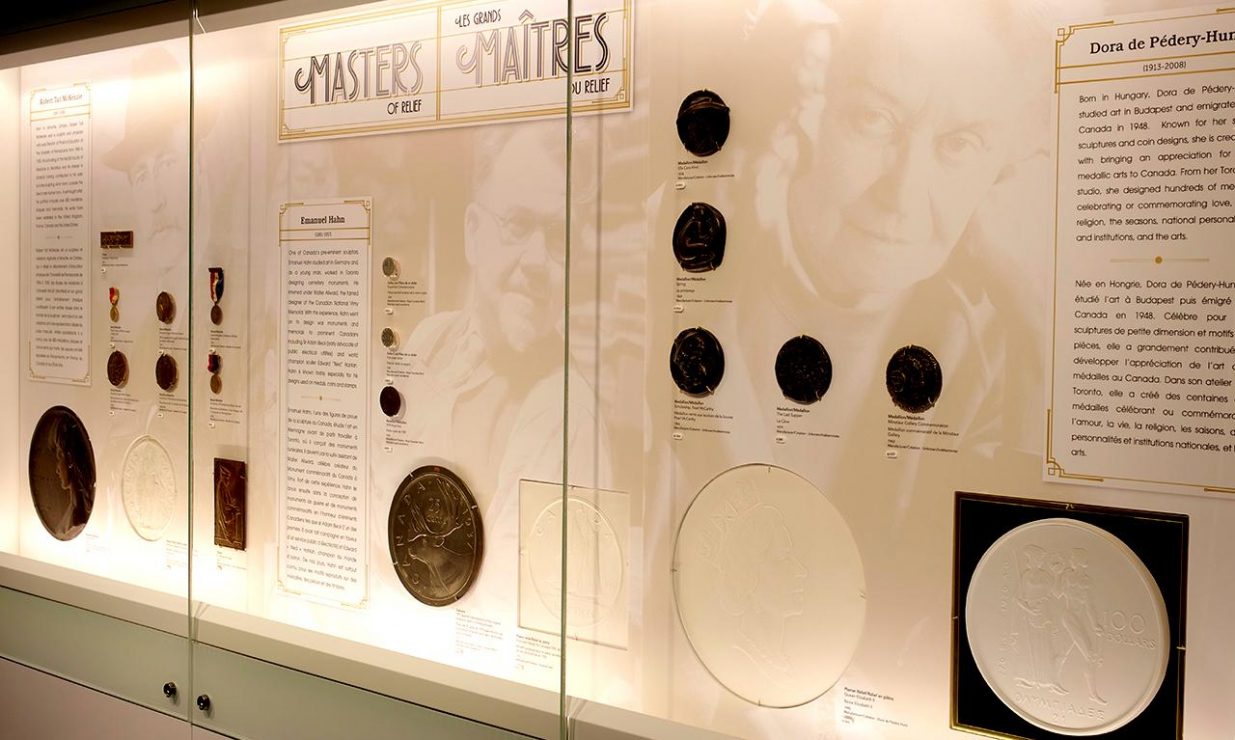Sculptor Dora de Pédery-Hunt
You will not see Dora de Pédery-Hunt’s signature on any coin, but you will see her initials on the Queen’s shoulder.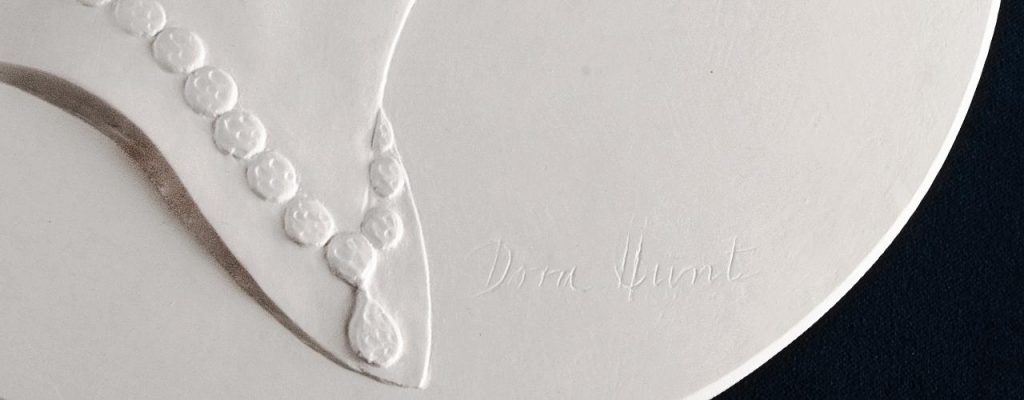
Limited Edition plaster reproduction of working model, #21 of 275. (NCC 2009.020.003)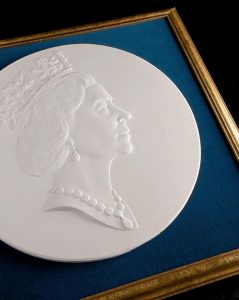
Dora de Pédery-Hunt’s work is as familiar as the change that jingles in your pocket. In all likelihood, you have come in contact with her work while using coins to pay for your morning cup of coffee. Dora de Pédery-Hunt was the first Canadian artist to design and sculpt an effigy of Queen Elizabeth II for coinage. Incidentally, this was the first time someone other than a British citizen had designed an official depiction of Queen Elizabeth II for this purpose.
When the Royal Canadian Mint (RCM) selected Dora’s design, she painstakingly began working on a clay model. All of the details had to be carefully considered, as the depth of the relief had to be suitable for producing coins. This model was then captured in plaster, where additional refinements could be made. Any errors could easily be corrected at this stage with the addition of more plaster. The size of the plaster is usually several times larger than the actual coin in order to capture all of the fine details.
At the time, there were many steps between the plaster model and the production of coins. Today, the process has been significantly refined. The plaster model is scanned in 3D and any final corrections or enhancements can be made digitally. Guided by this digital file, an engraving machine cuts the design into a piece of steel at the correct size of the coin. Known as a reduction punch, this piece of steel is then used to make the dies which will actually strike the coins. The tremendous pressure used to strike the coins wears down the dies, so the mint will periodically use the punch to create new dies.
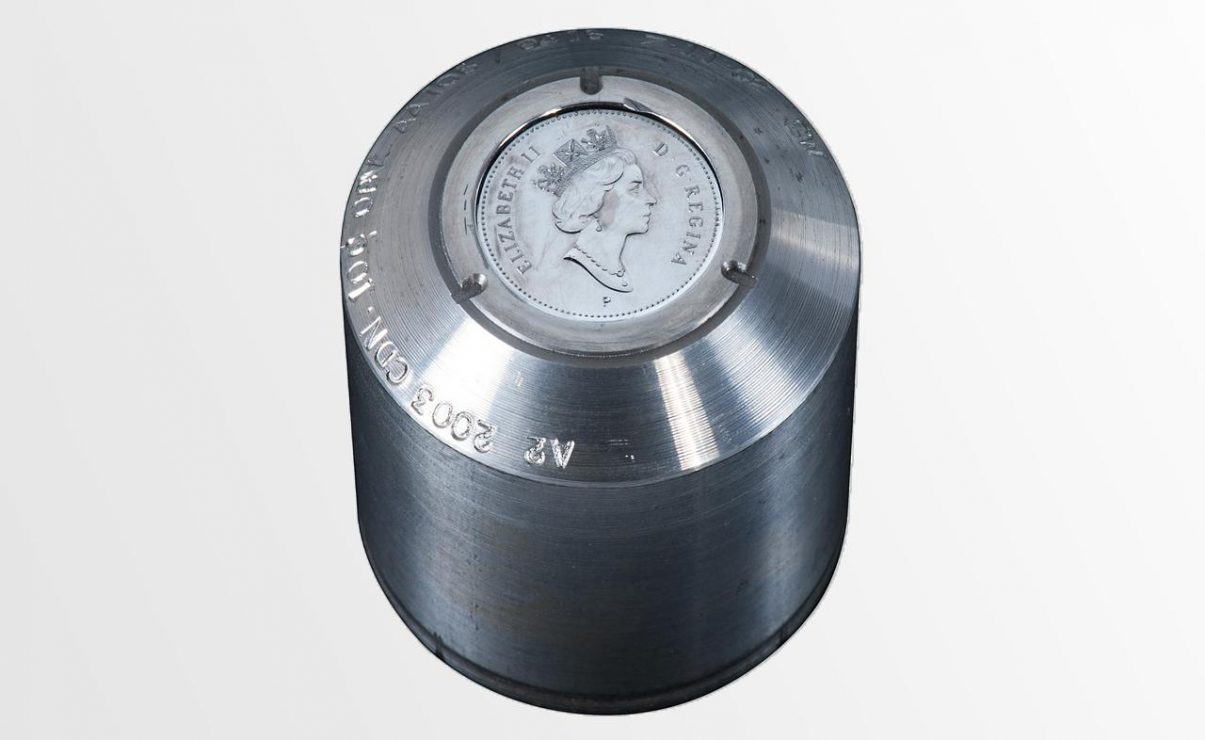
In 1999, the “P”, under the portrait on this punch, was added by the RCM to indicate a change in metal from nickel to multi-ply plated steel. (NCC 2010.058.006)
This portrait has appeared on all Canadian coins minted between 1990 and 2003.
The Museum Blog
150 Years Since Confederation
By: Graham Iddon
Canada’s cultural and regional diversity is a key part of our nation’s identity. However, it’s an enormous challenge to represent such concepts on a 7 by 15 centimetre piece of polymer.
Museum Reconstruction – Part 7
By: Graham Iddon
It’s a very flexible design and right now our graphics team is busy adapting it to a dozen different uses and formats.
Unpacking the Collection 5
By: David Bergeron
In the middle of the 19th century, a French lawyer and adventurer named d’Antoine de Tounens became fascinated by the Mapuche people of the Patagonia region of South America. At the time, they were struggling to protect their ancestral lands, their identity and their culture from colonial expansion by the governments of Chile and Argentina.
Museum Reconstruction - Part 6
By: Graham Iddon
So how’s the Bank of Canada Museum progressing? Everything seems to be ticking along just fine, thanks.
Unpacking the Collection 4
By: Paul S. Berry
Often referred to as “bookmark money” because of their narrow, vertical format, Japanese hansatsu were among the world’s most distinctive currencies.
Is That Blitzen on Our Quarter?
By: Graham Iddon
Well into my adulthood, I had assumed that the noble beast gracing the reverse side of our quarters was a moose. Clearly, I was not a terribly observant coin collector.
A Bank NOTE-able Woman III
By: Graham Iddon
Desmond truly exemplifies a Canadian who has overcome barriers, is inspirational to others, has made a positive change to society and in so doing, left a lasting legacy.
